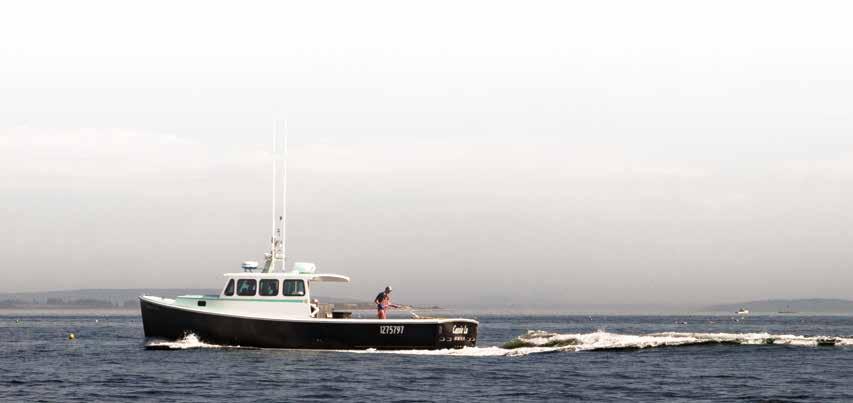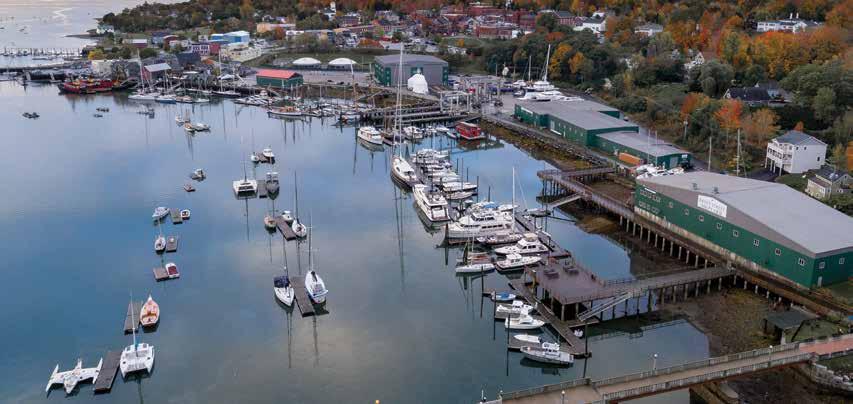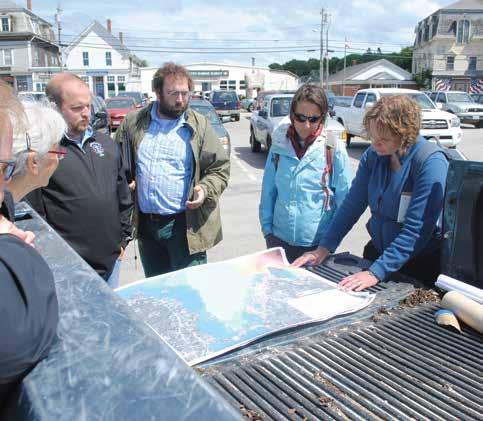From Sardines to Yachts: Belfast Transforms Waterfront A PART OF BELFAST’S WATERFRONT that was characterized by graffiti-
City government and Front Street Shipyard collaborated to create a thriving working waterfront with public access.
covered, decrepit industrial buildings was remade in dramatic fashion when Front Street Shipyard established its yacht service there in 2011. It might seem like an overnight success story. In fact, it’s a story that owes its happy ending to two groups of people who saw opportunity and were willing to work to find a way for each to win. Clichéd though it might sound, the Front Street Shipyard and Belfast’s city government truly achieved a win-win. It may not have come to fruition without a bit of legal innovation with a name only a lawyer could love: contract rezoning. The story begins with the demise of the sardine industry. In 2001, the Stinson Seafood plant on the city’s northeasterly waterfront was for sale. Wayne Marshall, the city’s planner, remembers Stinson asking $1.3 million for the property. “It was pretty much an unusual beast,” this 1,000 feet of shorefront that was dormant industrial, yet close to the heart of downtown. It was flat, a plus for redevelopment, yet narrow, hemmed in by Front Street. As the economy strengthened in the first decade of the century, the property drew interest from developers. Rather than allow a buyer to impose a vision, the city wanted a say in how this key property would develop. “We established a contract zone goal statement,” Marshall remembers. “We would negotiate what the terms were.” Contract zoning allows municipalities to consider a range of development proposals and stipulate their own standards. If both sides agree on a set of terms, a unique zone is created for an individual property. This provision is typically applied to larger properties.






